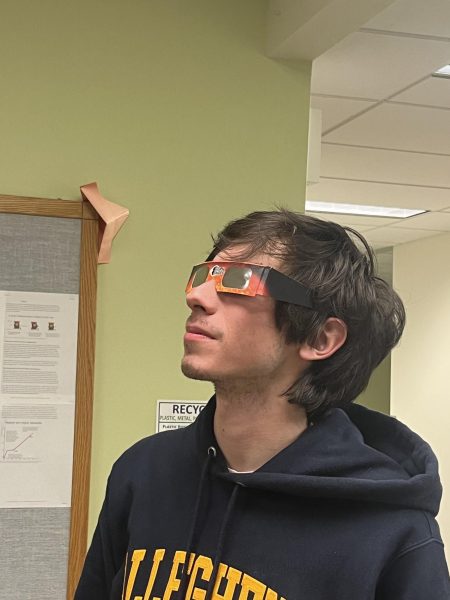How COVID-19 vaccines work: mRNA and vectors
Over 131 million American adults have received at least one dose of a COVID-19 vaccine according to the Center for Disease Control and Prevention, and this number is expected to grow as eligibility is expanded to the general population of many states.
In Pennsylvania all people over the age of 16 are eligible to receive a COVID-19 vaccine. Because of this, all students at Allegheny College are now eligible to receive the vaccine through the Meadville Medical Center, which offers the Pfizer vaccine.
This vaccine, as well as the one produced by Moderna, comes in two doses. Both are what are known as mRNA vaccines. According to the CDC, these vaccines develop antibodies through teaching cells to make a specific protein which triggers the immune response and induces the production of antibodies.
For the Pfizer and Moderna COVID-19 vaccines, the protein produced is known as the spike protein. This spike protein plays a key role in how the virus that causes COVID-19 infiltrates the cells of the body, according to a study published in Nature which looked at the structure and function of the spike protein.
This protein is what is found on the surface of the COVID-19 virus, and is what provokes the immune response as the cells receive instructions to make it through the injection of mRNA. This immune response is what makes the vaccines effective in resisting the contraction of COVID-19.
The mRNA vaccines are also the first of their kind to be administered to the general population, according to the CDC.
Researchers have studied mRNA vaccines for decades for diseases like Zika and rabies, but they have never been used outside of research and clinical trials.
The reason this type of vaccine was developed was because of the speed at which an mRNA vaccine can be developed in comparison to the traditional vaccine process, according to the CDC.
Despite the rapid speed of development, the FDA and the CDC say that the vaccine is safe due to clinical testing and close monitoring by these organizations.
According to Johns Hopkins Medicine, recent news of the suspension of the Johnson & Johnson vaccine is an example of this close monitoring.
As of April 13, the CDC and FDA recommended a pause in the use of the J&J vaccine due to six reported cases of serious blood clots. In response to this, use of the J&J vaccine has been halted in the United States, according to the New York Times.
The CDC emphasizes that the risks of adverse effects of the J&J vaccine are very low, especially for those who received this vaccine more than three weeks ago.
Despite millions of people reporting no complications from the J&J vaccine, safety is a top priority for the Federal Government. Due to this, the pause was recommended so that the instances of severe blood clots and their possible relationship to the vaccine can be better understood, according to the CDC.
Additionally, the CDC and FDA say that they will update the public as more is known and understood about these complications.
It also seems that these side effects have only happened when the J&J vaccines were used. There have been no reports of this side effect in those who received the Pfizer or Moderna vaccines, according to the CDC.
The J&J is not a mRNA vaccine. Instead it uses a more traditional method known as viral vector.
This method uses a disabled adenovirus which teaches the cells to produce the spike protein associated with COVID-19. Similar to the mRNA vaccines, this triggers an immune response and the production of antibodies, according to the CDC.
The adenovirus acts like a shell with some of the genetic material of the virus that causes COVID-19 on the inside. This material is what teaches the cells to produce the spike proteins, which triggers the immune response and production of antibodies.
In the past, viral vector vaccines have been used for Ebola, and many studies have been done on using them to treat HIV, influenza and Zika.
According to the CDC, the vaccines in use have no presence of the virus that causes COVID-19, and none of them can give you COVID-19.
Another difference between viral vector vaccines and mRNA vaccines is the number of shots. Moderna and Pfizer require two doses, while J&J require only one dose.
The reason for having two doses is that it produces longer lasting immunity according to Dr. Paul Offit, a voting member of the FDA’s Vaccines and Related Biological Products Advisory Committee which reviewed the vaccines before approval, in an interview with CNBC.
The J&J vaccine is fully administered in one dose because in trials it showed a strong immune response. In trials, the one dose of the J&J vaccine was much more effective relative to one dose of the two mRNA vaccines. This is what led to the decision to only use one dose, according to Nina Bai of University of California San Francisco.
The CDC also emphasized that all approved vaccines are safe and effective. According to the CDC, people should take the first vaccine they are eligible to receive.






